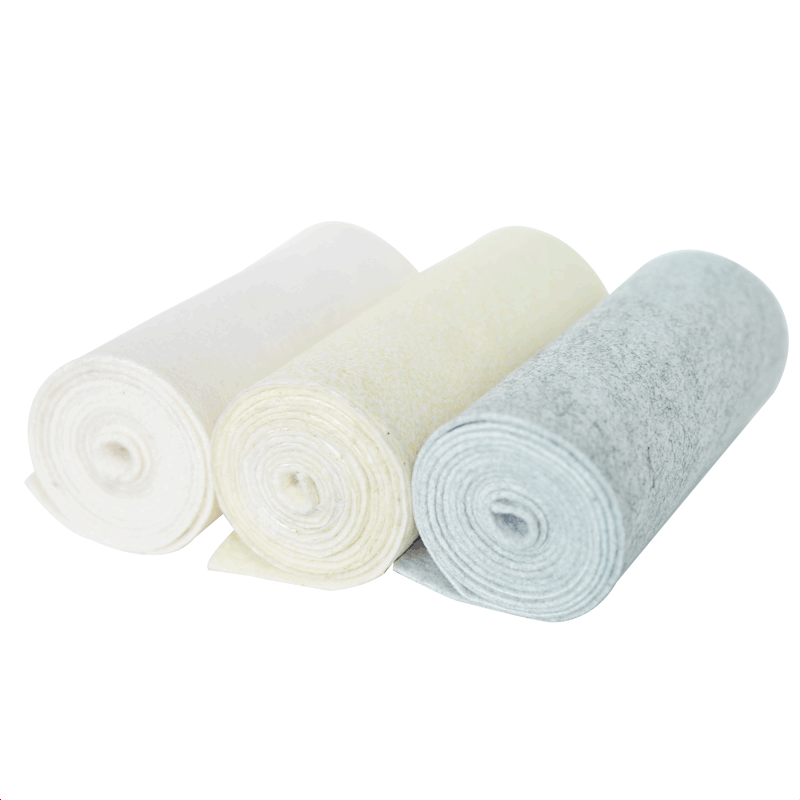
Acrylic needle felt, chemically known as homo polyacrylonitrile, has excellent chemical resistance and hydrolysis resistance, so it is widely used in the collection of a series of flue gases such as waste incineration, asphalt, spray dryers, coal mills, and power plants.
| Material | Homo polyacrylonitrile | |
| Weight | g/m² | 500-550 |
| Thickness | mm | 1.8-2.0 |
| Finish treatment | Singeing, Calendering, Heat setting | |
| Air permeability | m3 / m2 / min | 13-16 |
| Tensile strength | Warp | 1200 |
| Weft | 1300 | |
| Tensile elongation | Warp | 30 |
| Weft | 50 | |
| Temperature | ||
| Continuos temperature | C° | 125 |
| Instant temperature | C° | 140 |
| Features | Acid-resistant, alkali-resistant, hydrolysis-resistant | |
| Material | Homo polyacrylonitrile | |
| Weight | g/m² | 500-550 |
| Thickness | mm | 1.8-2.0 |
| Finish treatment | Singeing, Calendering, Heat setting | |
| Air permeability | m3 / m2 / min | 13-16 |
| Tensile strength | Warp | 1200 |
| Weft | 1300 | |
| Tensile elongation | Warp | 30 |
| Weft | 50 | |
| Temperature | ||
| Continuos temperature | C° | 125 |
| Instant temperature | C° | 140 |
| Features | Acid-resistant, alkali-resistant, hydrolysis-resistant | |
The acrylic needle felt adopts non-woven needle felt technology, which utilizes the staggered arrangement of
strong acrylic fibers and evenly distributed fine fiber cloth, and undergoes processes such as rolling and shaping
to make the outer surface smooth, making it less likely to be clogged by dust. It has large voids and good breathability,
as well as excellent chemical resistance.
Characters:
Below 125°C, homo polyacrylonitrile resists organic solvents, oxidants, and inorganic alkalis and acids.
The continuous working temperature: 125℃
Instant temperature: less than 140℃
Good acid and alkali resistance,
PH value between 3-11
Relative humidity: less than 30%
How To Choose Dust Removal Cloth?
When selecting a dust bag, you need to consider many factors such as gas temperature, humidity, and chemical
characteristics, as well as the weight, size, shape, filtration speed, dust concentration, cleaning method, emission
concentration, and bag dust collector working system of the particles.
The acrylic needle felt adopts non-woven needle felt technology, which utilizes the staggered arrangement of strong acrylic fibers and evenly distributed fine fiber cloth, and undergoes processes such as rolling and shaping to make the outer surface smooth, making it less likely to be clogged by dust. It has large voids and good breathability, as well as excellent chemical resistance.
Characters:
Below 125°C, homo polyacrylonitrile resists organic solvents, oxidants, and inorganic alkalis and acids.
The continuous working temperature: 125℃
Instant temperature: less than 140℃
Good acid and alkali resistance,
PH value between 3-11
Relative humidity: less than 30%
How To Choose Dust Removal Cloth?
When selecting a dust bag, you need to consider many factors such as gas temperature, humidity, and chemical characteristics, as well as the weight, size, shape, filtration speed, dust concentration, cleaning method, emission concentration, and bag dust collector working system of the particles.